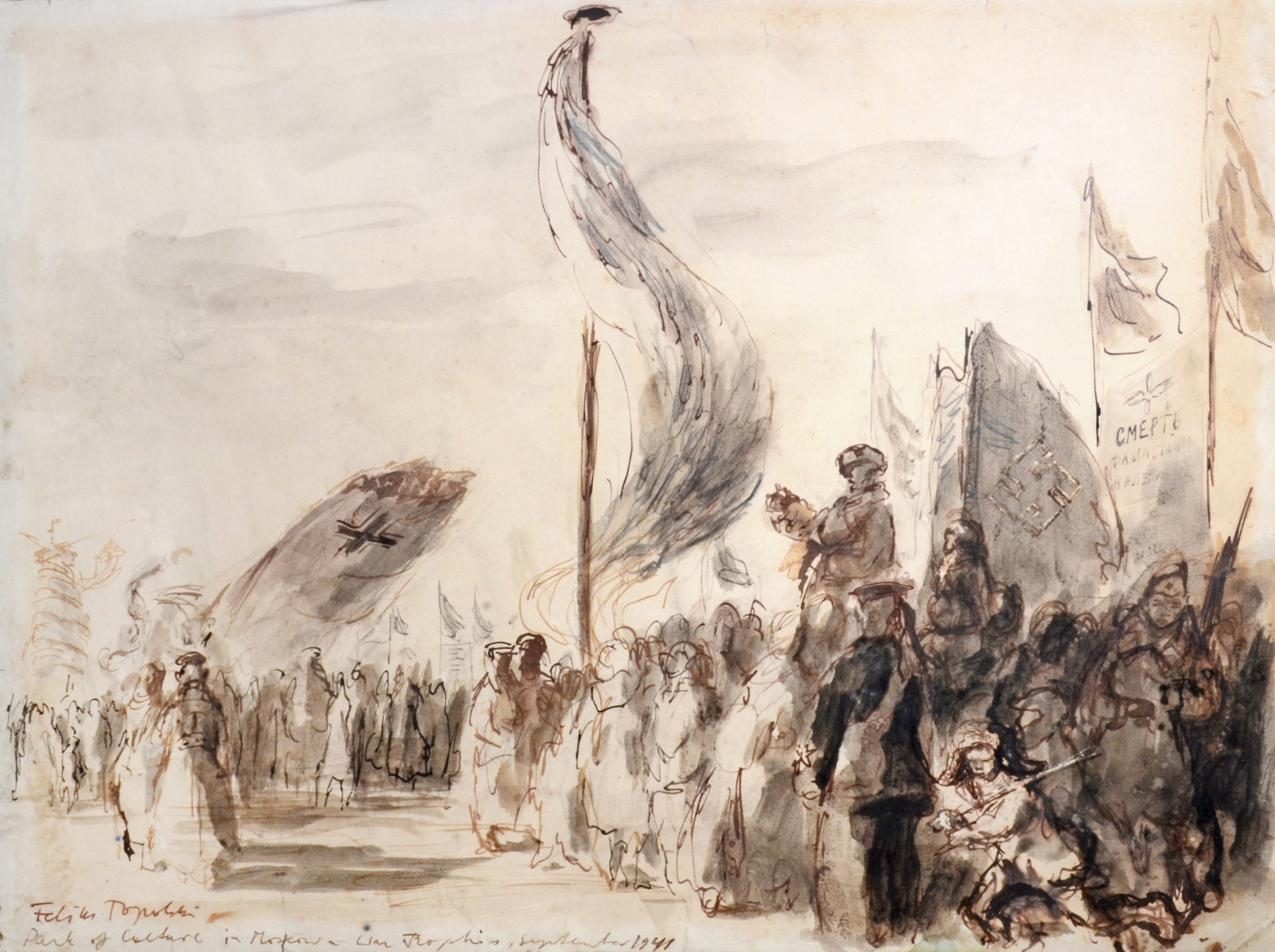
(click image to enlarge)
Framed in italian water gilded frame
When war broke out in 1939, Polish-born Feliks Topolski remained in London. While nominally serving as an officer in the Polish army, he became an official war artist to both the Polish government in exile and the British. For the British, he recorded bombed London streets during the Battle of Britain and the Blitz, in May 1941, and, while doing so, received serious wounds that led him to spend six weeks in hospital. As some compensation, his efforts resulted in the book, Britain in Peace and War (1941).
In August 1941, Topolski received a commission from Picture Post to travel as a member of the first allied Arctic convoy to Russia. He arrived in Moscow as the German army moved towards the city, in an advance that led to the gruelling struggle of the Battle of Moscow, and eventual Russian victory. Many of the drawings that he made there were published in 1942, in Russia in War, including the present one, which shows one of the highlights of the tour. This was an exhibition of captured German war trophies held at Moscow’s Gorky Central Park of Culture and Leisure, along the banks of the River Moskva. One American, who visited the exhibition in the following year, described it thus:
'Here, spreading over many acres is a vast but systematically organized collection of armament and equipment captured from the Germans. There are special sections for each classification – tanks, planes, trucks, artillery, uniforms, mines, bombs etc ... The Russian Major General who personally conducted me had special technicians elaborating details in each section ... [They] explained the differences in German and Soviet equipment and indicated how much more mobile a great deal of the Russian equipment is.'
(Edward C Carter, Chair of the American Committee for Russian War Relief, in a letter written to his son, John, on 15 November 1943)
By contrast, the present image focusses on the visitors to the exhibition rather than the exhibits themselves, and creates a sense of occasion by including a number of large and impressive flags – both German and Soviet – in motion above the crowd.
Following his return from Moscow, Topolski made further travels, which took in Egypt and the Levant, and India, Burma and China. In the final year of the war, he accompanied the Polish 2nd Corps in the advance up the Adriatic coast, and other Polish forces in the Low Countries. He was in Bergen-Belsen concentration camp two weeks after its liberation in April 1945, and later worked as an official war artist at the Nuremberg Trials. The record of these years appeared as Three Continents 1944-45 (1946).